15 Unusual and Less Known Uses of Rocks
Rocks and minerals are an enormous part of our lives. The more advanced that
science becomes, the more uses we find for rocks that have surrounded us since
the earth's formation. It is common knowledge that we use graphite in pencils
and tungsten in steel, but many minerals have lesser-known uses that are not so
easy to guess. Some uses of common rocks are even surprising.
15) Beryllium
Beryllium is formed in stars and does not last long, so it is
hard to find on earth. Discovered officially in 1797 by Louis Nicolas Vauquelin,
Beryllium has been around since ancient Egypt at least. It occurs on earth only
in combination with other minerals. It is the main component of aquamarine and
emerald jewels. Ancient people recorded ways to harness the element into
emeralds. It is a white-metallic element that is toxic upon inhalation.
Beryllium has many special properties and uses.
.jpg)
Beryllium is highly resistant to corrosion when compounded with alloy metals.
It thus makes ideal material for spacecraft metals because of how much wear and
tear it can withstand when compounded. X-ray windows are also primarily
comprised of beryllium, as well as are particle experiments. It is difficult to
incorporate sometimes because of how toxic it is. It is not an essential element
to sustain life. However, imagine life today without a proper X-ray system.
Beryllium is also used to line very high-quality speaker systems. Few elements
have so many useful applications in completely different areas.
Not only does beryllium have many uses, it also holds a great deal of
potential. Studies of beryllium as rocket fuel have not yet been conducted, but
scientists think it could be an excellent candidate. Supercars have also used
beryllium in their engine components in the past, until Scuderia Ferrari
protested and had it banned.
14) Gypsum
Gypsum is a soft, white mineral that dissolves very easily. The
national park, White Sands, in southern New Mexico, is a park completely
composed of gypsum sand, which is much softer and finer than regular beach sand.
This occurred because an entire mountain of gypsum eroded into a Pleistocene
lake that eventually evaporated, leaving behind an enormous amount of finely
dissolved Gypsum. Its name is derived from the Greek words for "chalk" and
"plaster," because the mineral is the main component of most plasters. Forms of
gypsum have also been used in sculpture.
Typical Gypsum Rock:
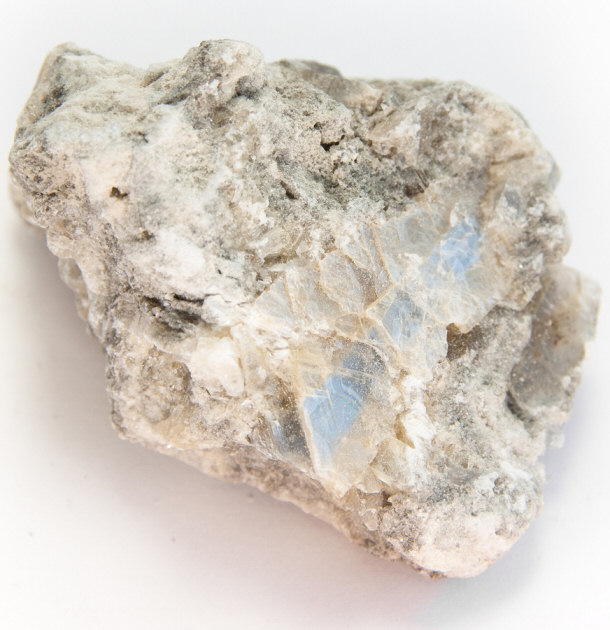
These Gypsum Rocks are Used a Lot for Landscaping Purposes:
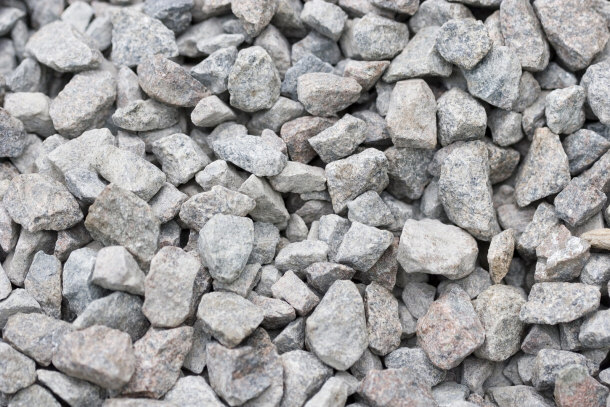
Gypsum became a high commodity during the early 1800s. This was due to the ability of gypsum to act as a
high-quality plant fertilizer, making it invaluable to farmers. Gypsum helps to
bind tennis court clay. It is a component in tofu as well and is very high in
calcium. "How to Brew" by John Palmer explains how gypsum can be used to add
hardness to water for those trying to homebrew. Gypsum can be found in countless
hair products, foot creams, and even the cultivation of mushrooms. This mineral
has almost endless applications in today's society.
Anyone who has ever caulked up a hole in the wall knows how valuable plaster
can be to the homeowner. Asians especially value the mineral, because they do
not consume as much dairy and need alternate sources of calcium, which Gypsum is
very rich in. Take the time to realize which elements of the earth affect and
help us most as a species. It will be difficult to look as gypsum the same
again.
13) Phosphate
Phosphate is a salt made from phosphoric acid. Phosphate is most
commonly used for fertilizers. In addition to potassium and nitrogen, phosphates
are one of the main nutrients required to cultivate crops. Treated sewage used
to fertilize plants also contains phosphates. It is also an important nutrient
for animals, so animal feed often contains good amounts of phosphates.
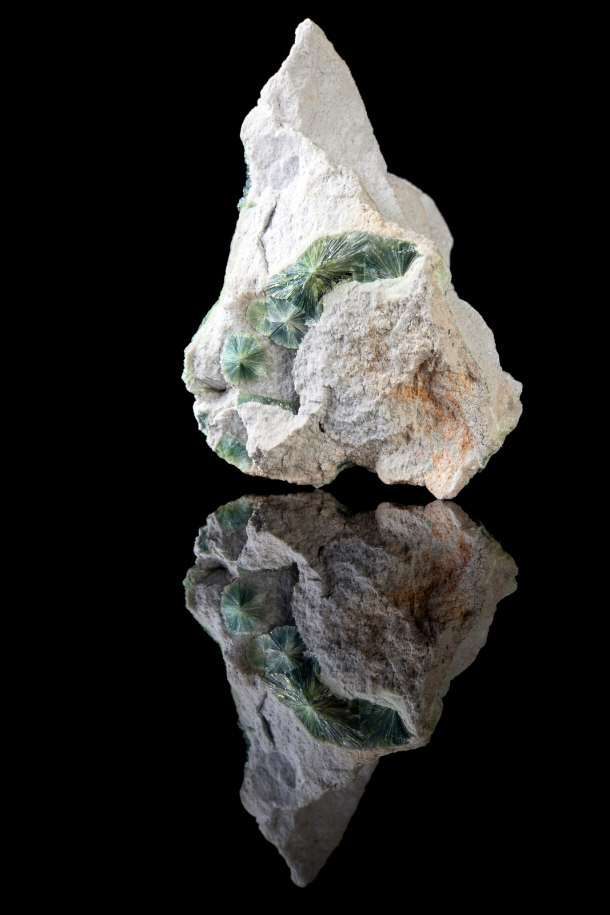
Human foods such as meat, dairy, and pastries contain phosphates, as humans
need the nutrient as well. This planet would be in a sad state if phosphorous
did not exist. More unusually, phosphate is a key ingredient in laundry
detergents along with dish detergents. Instead of basing these detergents on
soap, phosphate allows manufacturers to synthetically produce effective
detergents. Less commonly, phosphates are used for flame-retardant purposes,
ceramic production, and prevention of corrosion. The Food and Agricultural
Organization encourages farmers to make decisions before choosing phosphate to
ensure that they are picking the absolute best fertilizer for their property.
Either way, phosphate will be necessary in some form for those who wish to raise
crops.
12) Silica
 Silica is one of the most common minerals on earth. It has been
familiar to mankind since ancient culture and usually occurs in nature as sand
or quartz. People produce silica in many forms, from crystals to gels. Anyone
who has ever used a glass or looked out a window has seen a popular application
of silica. Porcelain and stoneware rely on silica for their structure. Silicates
are so useful because they have so many different frameworks and ways of bonding
with other elements. This gives silica many possible applications. Silica is one of the most common minerals on earth. It has been
familiar to mankind since ancient culture and usually occurs in nature as sand
or quartz. People produce silica in many forms, from crystals to gels. Anyone
who has ever used a glass or looked out a window has seen a popular application
of silica. Porcelain and stoneware rely on silica for their structure. Silicates
are so useful because they have so many different frameworks and ways of bonding
with other elements. This gives silica many possible applications.
Silica can be used to extract DNA, its gel can be used in space to collect
particles, and it can even be found in toothpaste as an agent to help remove
plaque. Popular Mechanics offers a list of uses for silica gel, including tool
protection from oxidization, drying a cell phone that has gotten wet, and
fighting camera condensation. Silica's absorbent and sturdy properties make it
useful and very safe to rely on, unlike more volatile compounds that may have
similar effects but can explode or turn toxic far more easily.

Quartz crystals, made of silica, also have many less conventional uses in the
religious realm. Many people use them to provide healing energy or to add power
to their thoughts. Quality quartz tied to a string can be swung over a special
chart to help predict the future and answer important personal questions. It is
important to note that while quartz is scientifically important in machines like
lasers, those who walk along the spiritual path in light also find great value
in silica. Quartz that has combined with other elements, such as gold, can
result in beautifully colored and collectible, valuable crystals.
11) Vanadium
Andrés Manuel el Río discovered vanadium in 1801. It is a transition metal now
produced most commonly in Russia and China. Unfortunately for the
development of this research, Río allowed scientific colleagues to convince him
that vanadium was indeed chromium, but future scientists sorted everything out
just decades later. Most vanadium is used as an alloy with steel to give it a
huge boost in strength. It is also a catalyst when producing sulfuric acid.
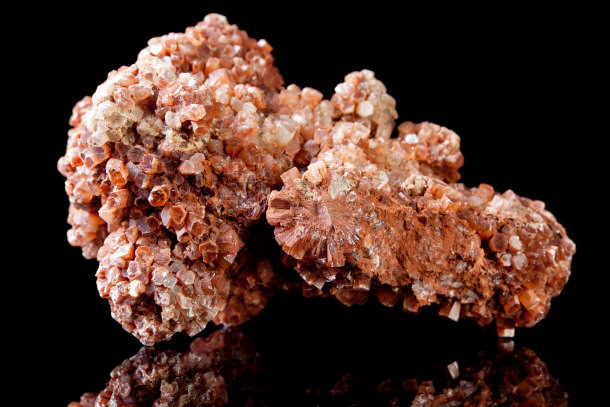
Vanadium is a by-product of Uranium mining and also as flue dust from heavy
oils. Basically to find vanadium, one must look in mineral deposits and where
fossil fuels are found. Vanadium present in living creatures may be acting as
a toxin. This is the current assumption, since many salts of the element have
toxic qualities. Vanadium's role in living organisms, including humans, has not
been completely understood yet, and there is much research left to be done on
the catalyzing element.
Along with making steel stronger, vanadium prevents corrosion and rust. It
helps to make glass coatings for objects by using infrared radiation. Vanadium
is even useful in nuclear reactors for capturing neurons and increasing safety.
Vanadium can also be used to create superconducting magnets.
Vanadium on its own cannot do much, but when combined with metals it becomes
essential to our use. If we had no way to protect steel from the elements, we
would not be able to rely on it the way we do today for buildings, roller
coasters, aircrafts, and countless other structures.
10) Zeolite
A microporous mineral most commonly applied as an adsorbent,
zeolites are available in 40 natural frameworks. They are used to help purify water and extract nitrogen
from the air. This is an important component of air purification and pollution
control. Zeolites work so well in this arena because its microscopic structure
creates regularly-sized pores that can be predicted, so they can be assigned to
appropriate filtration systems.
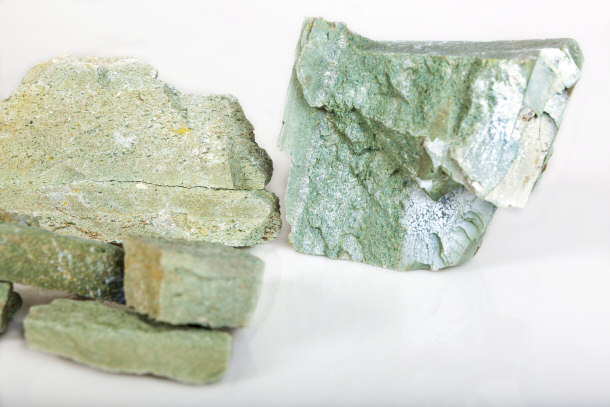
Those interested in cultivating fish will find zeolite important to keep
water free of ammonias and other harmful elements. Mines can be remediated with
the addition of zeolite, which contains metallurgical waste. Zeolite helps plant
soil retain its nutrients more cheaply than other fertilizers. This gives
zeolite huge potential is increasing crop production. Our entire food system
relies on plants being grown in harsh elements, so rocks like zeolite are
priceless.
9) Sulfur
Sulfur is a highly abundant non-metallic element. It occurs in its pure form and
in compounds. Pure sulfur crystals are very attractive and highly collectible.
Different sources of sulfur are used for sulfuric acid, but sulfur as an element
has many important uses as well. Sulfuric acid also has a variety of
applications, such as fertilizer.

People who make furniture have been used sulfur to create intricate wooden
inlays, but the gas emitted proved harmful enough to stop the practice. Sulfuric acid is the main purpose for
sulfur these days. It was also once used as a laxative and still remains a
material that assists with setting large steel bolts. Sulfur can be found in
less obvious places as well, such as insecticides and fungicides. Anybody who
enjoys the smell of garlic is actually enjoying the odorous result of sulfur.
This same element offers the skunk its main defense mechanism by allowing its
anal glands to smell especially pungent. Many people describe the smell of
rotten eggs as sulfuric, so it seems sulfur plays a large role in the odorous
identity of many substances along with its other practical uses.
8) Mica
Mica is easily identifiable in nature because of its basal cleavage.
It gives off a dark, glassy sheen, and when disturbed, it peels apart in layers.
It is a component of granite and can be found all over the world. The largest
mica crystal ever found was in Canada and weighed about 330 metric tons,
according to American Mineralogist. Miners typically mine for mica in areas
rich in granite since it occurs so frequently with quartz and feldspar. Besides
making up the shiny parts of countertops, mica also has some more scientific
uses.

Because of its ability to maintain its chemical structure and electrical
properties when subjected to heat, light, and electricity, mica is often used at
electrical plants in high frequency capacitors. It also makes an excellent
insulator because of these properties. This makes ground mica a common filler in average drywall. Most
Americans have lived somewhere that was constructed with drywall. Imagine if
developers had been unable to protect the substance making up our walls.
Life without mica would be a considerable burden. Mica is not just beautiful and
ubiquitous; it has also been greatly useful to recent electrical developments.
Mica is highly demanded and the mica mining industry is always growing. This is because mica is useful in
sheet, ground, and built up forms. All physical occurrences of mica can be
applied somewhere useful in our society. Completely unexpected places, like
diaphragms for breathing assistance equipment also contain mica. The mineral
that sparkles on your kitchen counter tops is also currently helping many people
who would otherwise die breathe clean air.
7) Lithium
Lithium is a great Nirvana song, but more importantly it is an
element in the alkali group. It is very flammable and must be kept in oil for
protection. It is so reactive that it is never found on its own in nature, only
in compounds. Lithium is most notably necessary for lithium-ion batteries. It
also forms part of the popular pharmaceutical drug Lithium, which helps to treat
bipolar disorder. Lithium is the current standard concerning bipolar medication,
and it can even help in the treatment of severe depression and some
schizoaffective patients. It is completely safe when combined with certain
materials, but lithium can be very dangerous to handle on its own if it reacts
with any water.

By Dnn87 (Self-photographed),
via Wikimedia Commons
Lithium has been used in everything from grease, to glass, to nuclear fusion
weapons. It is important to the
military for its contribution to propellants (such as missiles). Today it
remains in high demand for use in pyrotechnics, metallurgy, and even optics. Lithium is keeping a lot of people in the world
mentally stable and has assisted the military for almost a century. The world
would not be the same without lithium.
6) Galena
When miners mine for lead, they are essentially trying to obtain
galena, which is the mineral form of lead that occurs naturally. This mineral is
incredibly important to humans, though it has caused some healthy problems in
years past. Its main use is in lead-acid batteries and is the state mineral of
both Wisconsin and Missouri.
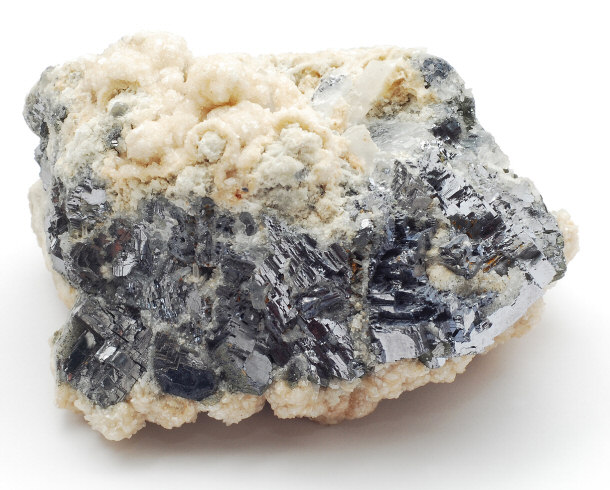
Galena is mined because of its silver content as well all over the American
West. It is an economically very
important ore and major source of silver. In ancient Egypt, people would put the
mineral around their eyes to help with the desert sun, and it also kept flies at
bay. Its status as a semiconductor made it useful in early wireless
communication. By taking galena and a safety pin, one could detect radio signals
in the area. This became quite popular during the 1930s for British and European
people to do at home. Galena has quite a few uses beyond its basic lead
structure. Some of them even allowed people to have fun at home with minerals.
5) Antimony
Antimony is a metallic element whose compounds often resemble
lead in appearance. Occurring on its own rarely, it can mostly be found in
sodium compounds throughout the planet. It was often confused for lead back in
ancient times, when people used it for cosmetic purposes. China is the main
producer of the world's supply of antimony and antimony compounds. It is a
highly useful element, because it is necessary in flame-retardant compounds.
That is something hard to come by in nature.
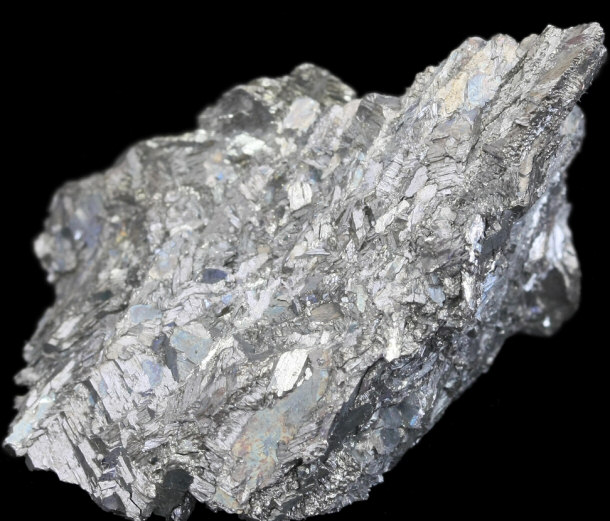
In fact, antimony itself is somewhat hard to come by. It makes up such a
small fraction of other minerals that it is relatively quite rare. However, its
presence in over 100 minerals on earth means that humans have been aware of this
element for thousands of years. The first known object using antimony was a vase
created around 3000 BC. The fact that the vase remained intact over the years shows that
ancient people must have had some art to transform the element from its brittle
state that we recognize now.
Antimony has also proved itself useful by getting rid of those tiny little
bubbles in glass. We all have watched television; imagine the screen being
filled up with annoying bubbles. That is what we would have to deal with without
antimony. Antimony can also be
found in safety matches, pharmaceutical drugs, and infrared detectors.
4) Gabbro
Gabbro is a basaltic, dark igneous rock. It can be found
underwater at mid-ocean ridges where magmatic activity is high. What makes
gabbro special is that it often contains valuable metals such as gold, nickel,
silver, and platinum. This also makes the rock very visually appealing, so
people enjoying making crafts with it.
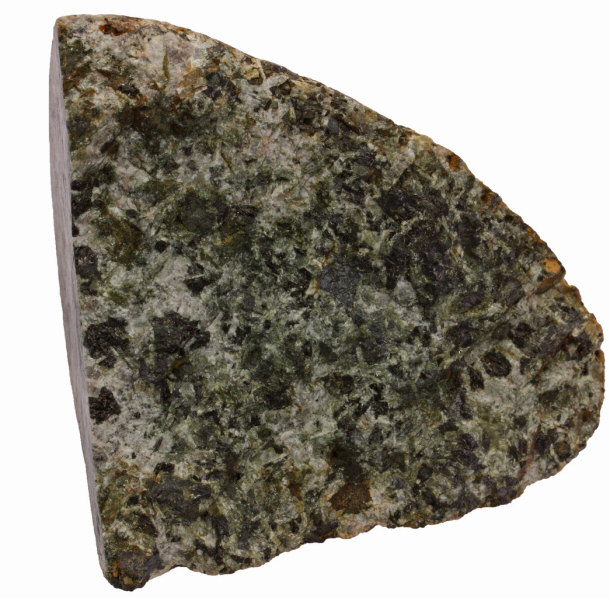
Gabbro can be found in ornamental plates, paving stones, and gravestones. It
also lines countertops under the name "black granite". Gabbro is also used as a sea defense material, preserving
and protecting certain beaches from erosion from the constant ocean waves. It
even gives the beach a beautiful metallic sparkle while it protects it from
other elements. Gabbro often contains quartz, making it even stronger and more
visually appealing. The ability of many valuable elements to be present in
gabbro makes the rock versatile and useful to many potential areas of daily
life.
3) Limestone
Limestone is a variety of sedimentary rock containing mainly
aragonite and calcium. It is highly ubiquitous throughout the world. Belsazar
Hacquet first correctly identified it in 1778. The outside of the Great Pyramid
of Giza is made completely from limestone, proving its usefulness in
construction since ancient civilization. Limestone is not the cheapest
construction material, and it is very heavy,
but it is used in many buildings that are
not too tall. It is highly vulnerable to acids, and will dissolve, making acid
rain a huge threat to limestone structures.
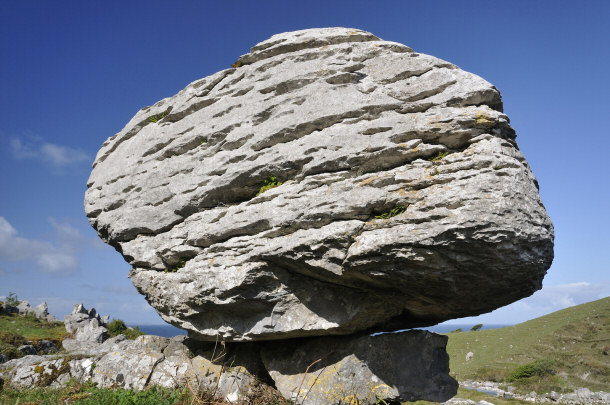
Limestone is ideal for carving and can be found in many ancient beautiful
sculptures. It adds white filler to paper, plastics, and even toothpaste. It can
help make glass, and it can contain methane explosions underground in mines.
Limestone has so many lesser-known uses besides simple construction material.
Many of us do not realize we may be brushing our teeth with limestone every day.
Some cities and islands have far more limestone construction than others.
Because limestone is so prevalent and makes up one-tenth of all sedimentary
rocks, some regions have only limestone to rely on in terms of building
construction. Kingston, Ontario, Canada is even known as "Limestone City"
because of its overwhelming numbers of limestone buildings. The island of Malta
also had little else to rely on and thus has cities constructed almost entirely
from limestone. Limestone is completely reliable and visually appealing except
in areas more vulnerable to acid rain. Throughout history, some cities have
adopted limestone for construction as a stylistic trend, so travelers can find
many cities like London with large regions of limestone construction. Medieval
churches also relied on limestone for their structures. It is hard to come
across a more ubiquitous and useful element.
2) Pyrite
Pyrite is a highly common mineral composed of iron and sulfur.
More commonly known as fool's gold, it bears a resemblance to gold and has
tricked many a miner throughout history. For a while, pyrite was used to help
ignite firearms in the 16th century. It has also come to replace sulfur as the
commercial source of sulfuric acid. It also helps to form
sulfur dioxide for making paper. Fool's gold may actually be part of the process
behind the paper we use.

Pyrite has recently found a use in Energizer lithium batteries as a cathode. It can help detect other minerals in radio
receivers. In the future, it will likely be used as a main component in solar
panels. Because pyrite is so
pretty on its own, it is also used in marcasite jewelry. It is rare to find
something with so many important uses that is still aesthetically pleasing
enough to be worn as jewelry.
American settlers in the early 1600s were ecstatic when they found enormous
amounts of pyrite on the east coast. Thinking it was gold, they sent it off to
England by the shipload, only to be heartily disappointed some weeks later.
Thankfully, many other uses for pyrite have been found since then, and it did
not turn out to be useless after all, as many disheartened settlers once
thought.
1) Bismuth
Most of us have used or heard of Pepto-Bismol and perhaps thought
it was a strange name for a product that is meant to be drunk (it is just not an
appealing name). It is in fact named for its main component, bismuth. Bismuth is
an element that is chemically similar to arsenic, though obviously not
poisonous. It is produced artificially because of its usefulness but can occur
in nature on its own. Older civilizations confused it for tin and lead because
of its metallic structure, and it functioned for them in the same ways as tin
and lead would. It was often used in metal alloys.
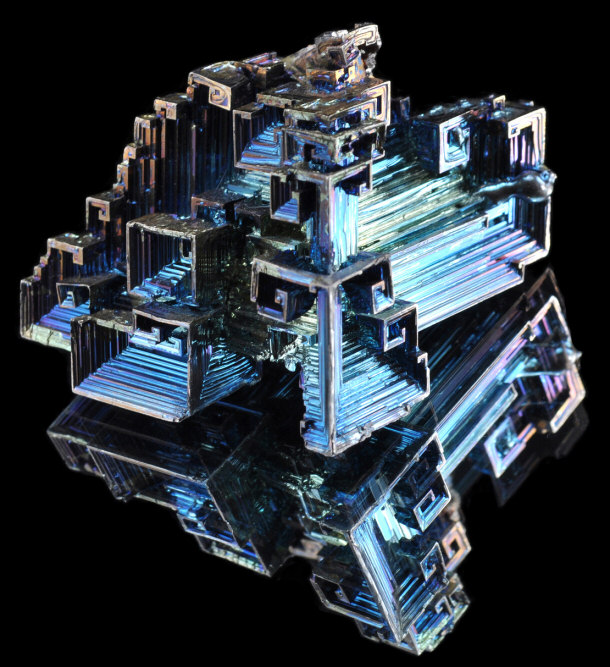
Mankind has known about and used bismuth since ancient civilization, so no
one knows who exactly discovered it. When allowed to build up, it constructs a
beautiful metallic structure that is multi-colored and iridescent. Since it has
been adopted as a safer substitute for lead in many products, the price of
bismuth has quickly shot up in recent years. Before that it was mainly used to
treat burns and sexually transmitted diseases. Today bismuth is also used in
ceramics, lubrication, and waterfowl hunting shot.
Final Words
Rocks and minerals are all around us in nature. Most of us do not realize how
huge of a role they play in our daily use of tools, cars, buildings, and various
materials. Without rocks, our lives would be completely different, and it is
hard to say how we would get by. It is important to know how these minerals
works for us on a daily basis, as it builds to a greater understanding of the
surrounding world. The knowledge may come in handy some day.
Nature
Top Lists:
15 Fascinating Facts about the Amazon Rainforest
15 Remarkable Facts About Bacteria
15 Remarkable Facts About Jellyfish
15 Little Known Facts About Elephants
15 Fascinating Facts about Earthquakes
15 Odd And Interesting Facts about Monkeys
Top 15 Myths about Snakes
Top 15 Myths about Horses
Top 15 Creepy Deep Sea Creatures
15 Unexpected Animals That Can Kill You Quickly
Top 15 Spider Myths
15 Beautiful Animals that are Now Extinct
Top 15 Most Amazing Snakes Around the World
15 Fascinating Facts about Snow
Top 15 of the World's Rarest Flowers
10 Most Emotional Animals
15 of the Most Venomous Creatures to Roam the Earth
15 Unusual Animal Defense Mechanisms
15 Unusual and Less Known Uses of Rocks
15 Unique Forest Creatures Less Known To Man
15 Interesting Facts About Time
15 Unknown Parasites You Never Knew Existed
15 Weird Trees Around The World
15 Wild Animals Deadly to Humans
15 Exotic Insects That Are Harmful & Deadly
15 Ridiculous Uses for Gold
Informational:
Preparing for a Disaster
Proof That We Are What We Are!
What is the Meaning of Life?
The Trend and Challenges Facing the Urban World
Creation Narratives and the Evolution Creationist Debate |